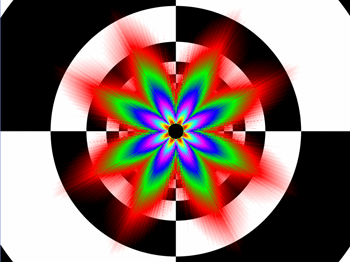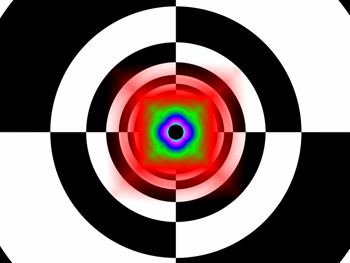R5-series Image Quality Discussion
R5-series' texture filtering hardware implements a highly rotationally-variant selection algorithm for anisotropic filtering, which means that depending on the rotated angle of the texture relative to the viewport, it'll take more or less samples to effectively bring out lost texture detail that'd be otherwise missing from the final image.More samples are taken at major angle steps (every 45°), just like you'll see in all major GPUs released since D3D9 came to pass. However, ATI have also implemented a higher quality mode that's much less rotationally invariant than default. It's not quite full rotationally agnostic, but it's close. It does more sampling work per texture than the default mode, depending on angle of course, to get a better final colour value out of the texture surface to display on your screen.
While there's an obvious performance cost for doing so, given the less latent texture sampling (we'll show you that soon) inherent to R580 and friends, it's much less than a similar scheme would be on ATI's older hardware.
Combine that higher quality anisotropic filtering mode, fast bilinear fetch of texels into single channel texture surfaces (useful for softening shadow penumbra when shadow mapping, among other techniques), multisampling of 'HDR' surface formats, adaptive antialiasing (multipass resampling of alpha textures along with MSAA) and R5-series' Avivo technology, and you have potentially the best looking pixels on a PC display to date, largely unmatched by anyone else.
While we save a discourse on 'HDR', its application with MSAA on ATI hardware and better looking pixels in general, increasing the speed of hardware is really secondary to making the pixel output look better, now and going forward. Processing ability is abundant, better looking pixels can still be hard to come by. More on this in the future.
We'll leave you with a comparison of the two levels of invariance possible when doing aniso on R5-series chips, using Xmas's famous FilterTest application, pending a closer look at the IQ and IQ performance possible with these new chips.


Note on the second image that the MIP levels are pulled in and the angles receiving the higher level of filtering are more numerous (think of the image as 360 degrees of rotation around a far point, looking down a tunnel). All for pretty much the same performance hit as regular aniso, despite a much larger texel sampling count.
Need to know how anisotropic filtering works in more detail? There's a page in our exam of NVIDIA's texture filtering quality with an older driver of theirs that underfiltered, here.
Let's sum R580 up, compared to R520, before moving on to a look at the first Radeon SKU to be powered by it.









